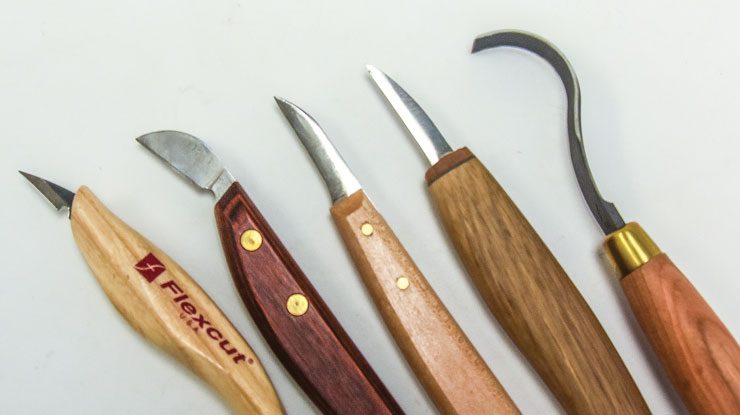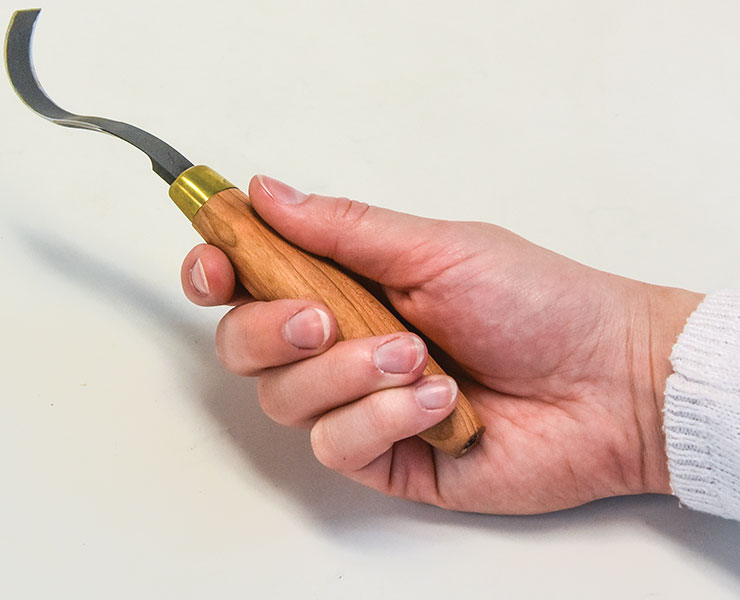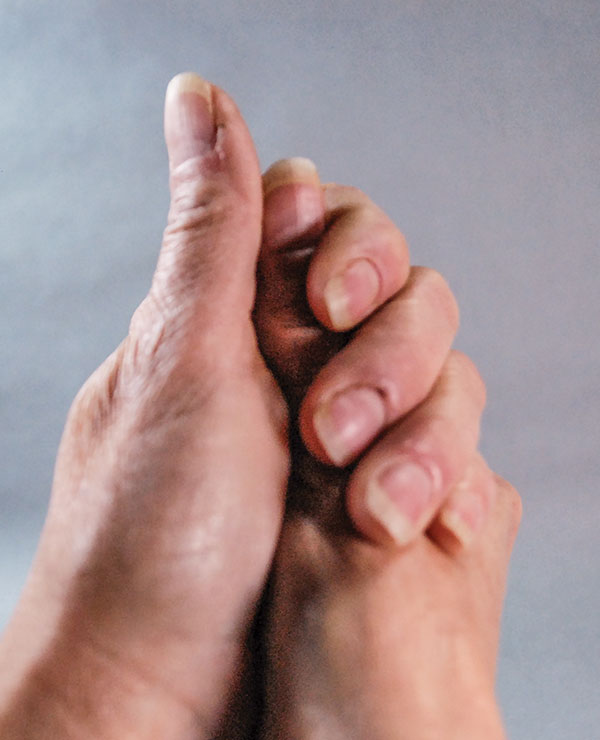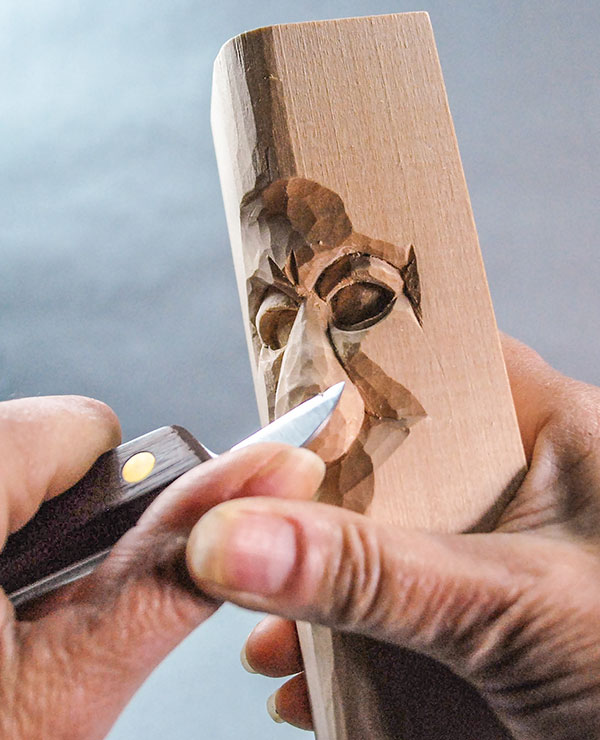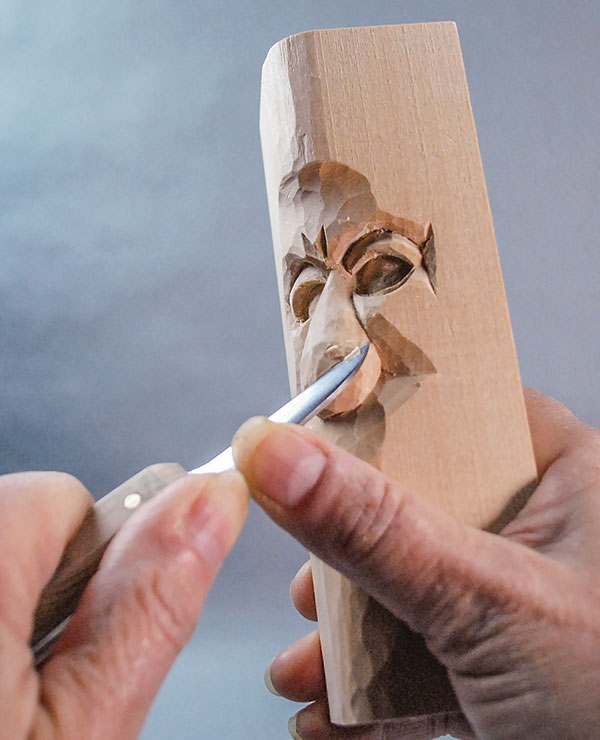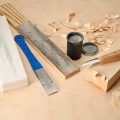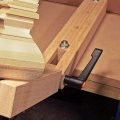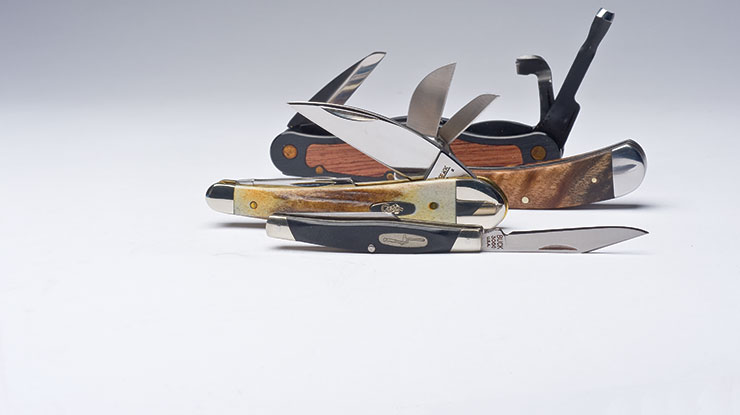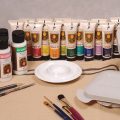It all comes down to fit and steel quality
By Lora S. Irish
You will notice, as you search for a new carving knife, that there are enough choices on the market to make your head spin. So how do you sort through them all to find the tool that’s right for you? Here’s a quick guide to get you started. After you select the right knife for you, try it out on one of our carving projects, such as Heart-Shaped Bottle Stopper.
Bench KnivesThe tool we call a bench knife comes in many shapes and sizes. Some have long blades that may extend up to 4″ (102mm) from the handle, while others, such as chip-carving knives, have a 1″ (25mm)-long blade. Some blades have straight cutting edges, while others start to curve along the top third of the blade. Some are sharpened on one side only while others are sharpened on both. And each will fit your hand differently. While many wood carvers have a variety of bench knives in their kits, most return over and over again to just one or two favorite tools. Following are the two main factors to consider. |
Steel QualityIt determines how sharp an edge the knife can achieve and keep during a carving session. No matter how skilled you are, you’ll never be able to sharpen inexpensive steel into a bright, clean edge. Any sharp edge you do get will not last long. Be prepared to pay about the same amount for one good bench knife ($20-$25) as you would for a full five-to-six-piece inexpensive beginner’s carving set. There are several companies (Barton, Flexcut, Helvie, Moore, My Chip Carving, OOCT, Warren) who make carving knives from excellent steel. If you don’t recognize the name, investigate before buying; inexpensive often means low quality steel. |
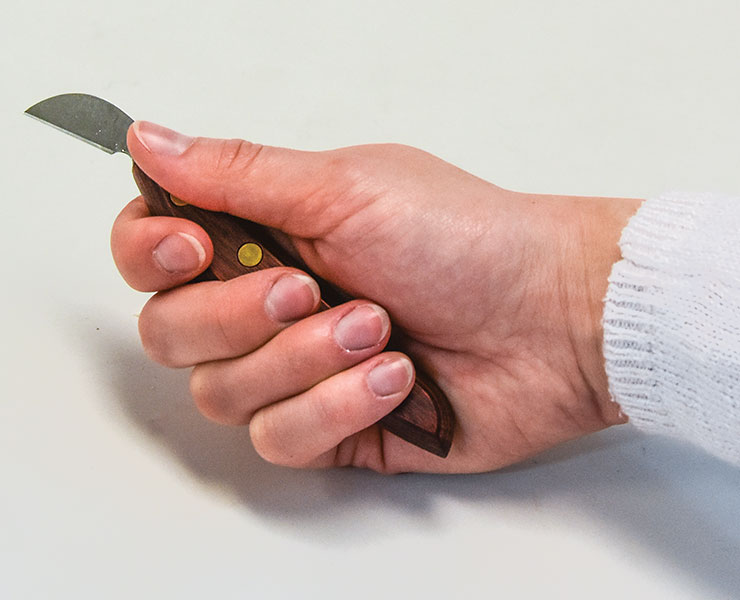
A knife handle that properly fits a woman’s hand… |
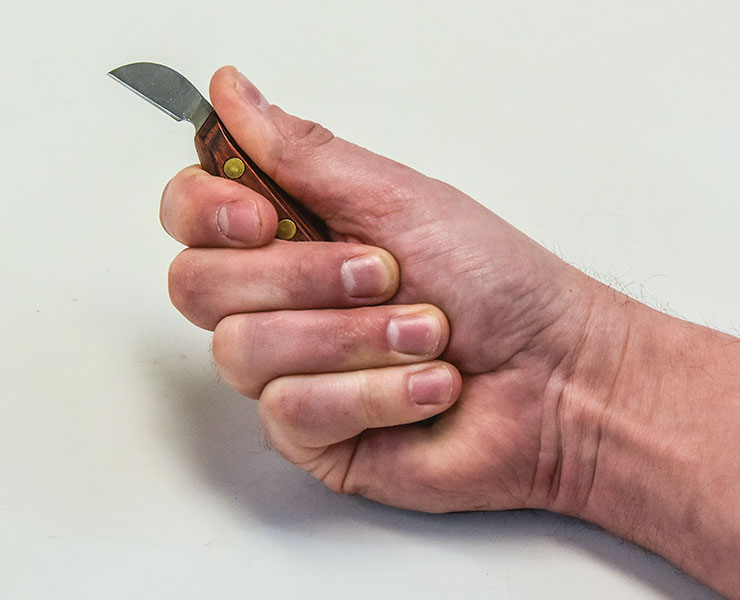
…will most likely be too small for a man. |
TIP: Adjusting A HandleIf your knife handle is too large, sand or carve it down to fit your hand. If the handle is too small, wrap vet-wrap tape around the handle to build it up. |
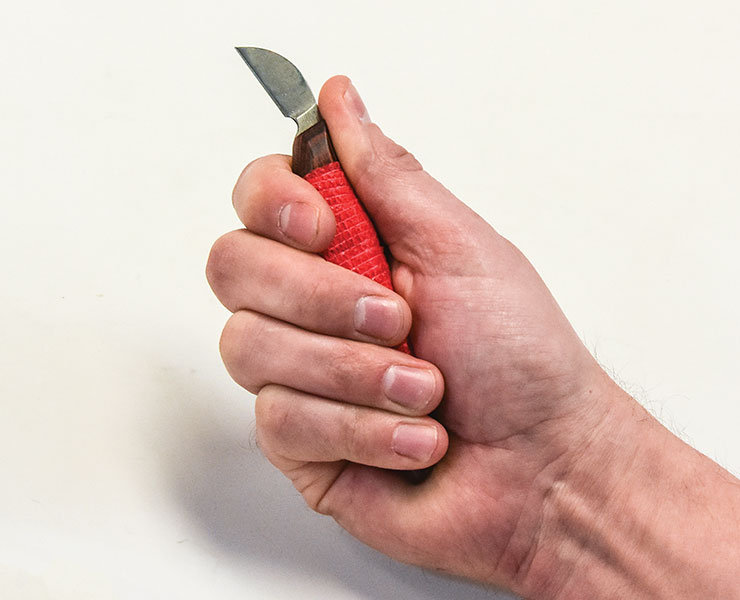 |
| About the Author |
| Lora S. Irish is an author, artist, carver, and pattern designer residing in Mount Airy, Md. She has written Landscape Pyrography: Techniques and Projects, Crafting with Gourds, Finishing Techniques for Woodcrafters, and many other Fox Chapel Publishing books. For more of her work, visit lsirish.com. |
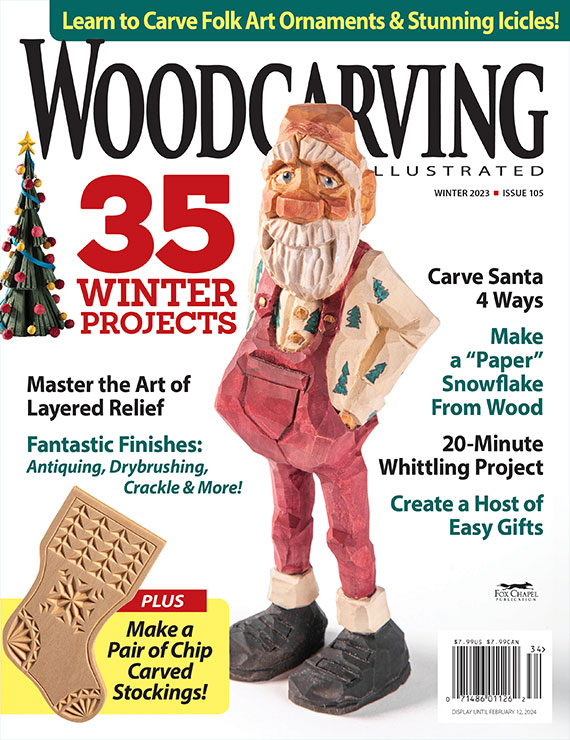 |
Get the Winter 2023 Issue Purchase the IssueFor more articles like this, subscribe to Woodcarving Illustrated magazine. Magazine SubscriptionPlus! Get digital mini magazines in your e-mail between printed issues.
|


